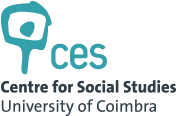Theses defended
Interweaving an Emancipatory Human Rights Education in Brazil: The Learning Community of Paranoá
March 15, 2024
Human Rights in Contemporary Societies
Teresa Cunha
The present thesis aimed to investigate to what extent the pedagogical practices developed by the "Escola Classe Comunidade de Aprendizagem do Paranoá/ Public School Learning Community of Paranoá" (CAP) can contribute to the construction of an emancipatory Human Rights Education (HRE). To accomplish this, I conducted a single in-depth case study, which was carried out on-site in the peripheric city of Paranoá, Distrito Federal, Brazil, spanning the years 2019 and 2020. In my quest to approach the "decolonization of practices", I crafted a methodological framework based on the concept of mae - representing the path, and the "footprint on the ground" for the Yanomami people (Davi Kopenawa & Bruce Albert). This framework sought to demonumentalizing scientific knowledge, incorporating a personal, lyrical, and autobiographical tone, interwoven with hybrid, enchanted, and mestizo wisdom, as well as decolonial philosophical and pedagogical propositions (rooted in other cosmological frameworks). These included the epistemologies of the South by Boaventura de Sousa Santos, the Sociología de la Imagen by Silvia Cusicanqui, the Entrecaminho by Gloria Anzaldúa, the Sentirpensar by Orlando Fals Borda, and the Corazonar by Edgar Patricio Guerrero Arias. Driven by the aim to address two questions - 1. How do experiential and affective forms of "knowledges" assist in the construction of the flourishing narratives of dignity to social and cognitive justice, by means of the pedagogical practices promoted by the CAP; and 2. Can the educational experience carried out at the CAP be related to the construction of an emancipatory HRE? - I conducted an extensive qualitative research study that traversed three study approaches: descriptive, exploratory, and prospective. This research employed various techniques and methods including: (postabyssal) participant observation, field diaries, conversation circles, focal groups and workshops, and open and semi-structured interviews. These interactions took place with children (aged 6 to 12), educators, school managers, university professors, legal guardians of students, local artists and leaders, activists, and civil servants associated with the entire school community linked to the CAP. As a result, diverse and varied materials were generated - encompassing audio recordings, drawings, photographs (both digital and analog), and videos -, with all this data (collected and produced) being analyzed according to the observation of patterns of repetition and thematic importance, based on the construction of coding units and the creation of prior analysis categories. Structured around four sections: Section 0 "Starting Our Journey" - This part sets forth arguments about how the thesis can be read and shared; Section 1 "Experimenting the Weaving of Methodology" - This part delves into the methodological experience of building the research by its participants and the necessary self-reflection; Section 2 "(Re)cognizing Human Rights (and their Violations)" - This section discusses the topic of Human Rights (HR) within the concrete struggles that contributed to the formation of the current Paranoá community and the CAP, reflecting on the subject from the grassroots level to the various named and interpreted forms of violence experienced by children, especially in their communities; and Section 3 - "Dreaming, (Re)Creating, and Living Another/ New Education" - I intersect the issue of education and class, presenting the story of Leila's dream and her encounter with Caio, a "problem child" who is another "victim" of an education system oriented towards capital that does not see him as a subject to be embraced and/or educated. I articulate the importance of CAP's practices, rooted in values (especially LOVE, RESPECT, AUTONOMY, and RESPONSIBILITY), with HR concepts identified and discussed in the field (such as JUSTICE, FREEDOM, DIGNITY, and PEACE) to build another/ a new education. Finally, I conclude that the overall objective was achieved, confirming that the pedagogical practices developed by the CAP can indeed contribute to the construction of an emancipatory HRE, as I sought to demonstrate throughout Section 3 - based on the Leila and Caio's story, and on the students' and interviewees' own voices and productions -; since emancipation must be deeply linked to the promotion of equality in differences, through the promotion of equity and dignity. Essential to this is the implementation of practices that ensure the recognition and acceptance of the various (and undeniable) existing differences and inequalities. This assists in the construction of other/ new/ possible sensitivities and "knowledges" that go far beyond an institutional relationship, touching deeply on the human/ terrestrial being, and thereby establishing and strengthening links under construction and promoting a close and holistic educational connection of understanding and care with oneself, with others and with the entire community.
Keywords: Emancipatory experiences; Epistemologies of the South; Human Rights Education; Learning Communities; Public school
Public Defence date
Doctoral Programme
Supervision
Abstract
Keywords: Emancipatory experiences; Epistemologies of the South; Human Rights Education; Learning Communities; Public school

